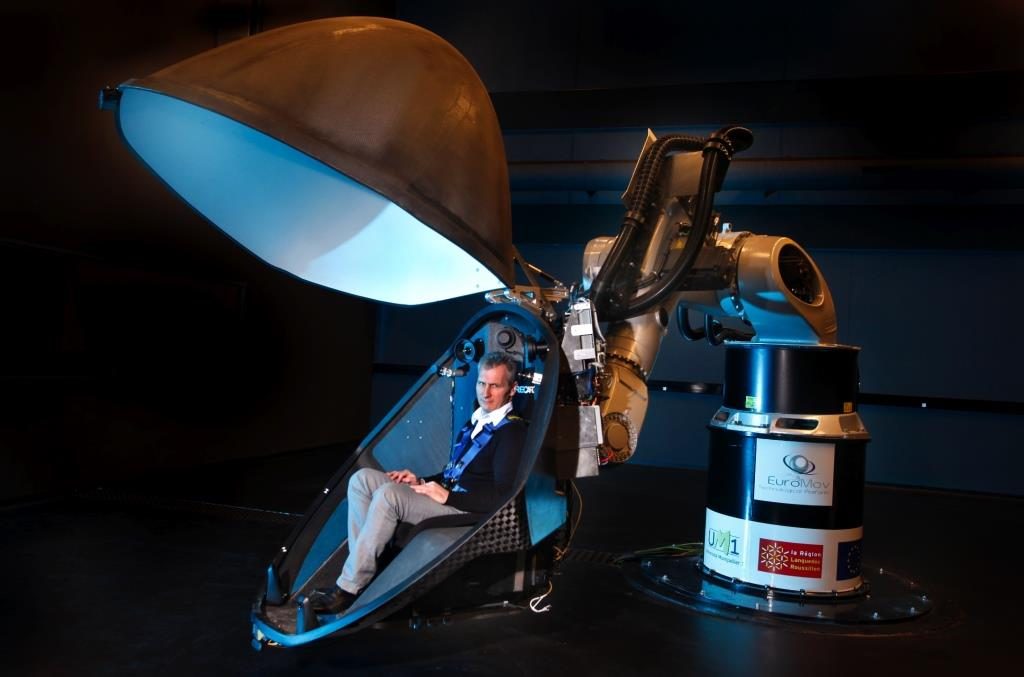[LUM#3] Under safer skies
Even more reliable aircraft: that's what researchers at EuroMov at EuroMov. These movement specialists are tackling a sworn enemy of pilots: spatial disorientation.

. © Patrick Aventurier
Can you tell up from down? Can you tell the difference between going up and going down? Yes, of course! It's easy when you have both feet on the ground. But it's more difficult when you're flying a plane or helicopter... "The senses we use to maintain our balance and distinguish up from down are no longer reliable when we are moving without an external reference point," explains Benoît Bardy.
This sensory confusion can cause pilots to have a distorted perception of their position and movement relative to the Earth. They then suffer from "spatial disorientation." This phenomenon is still poorly understood and has serious consequences: it is believed to be responsible for 15 to 20% of aircraft accidents.
Upside down
To study this phenomenon, Airbus and Onera, the French aerospace research center, called on researchers from EuroMov, the European research center on movement, and its specialists in spatial orientation.
“We have a simulator that is unique in France called iMose, which allows us to put airplane and helicopter pilots in situations to analyze their reactions,” explains the director of Euromov."They are equipped with a virtual reality headset to reproduce real flight conditions as accurately as possible," adds Jérémie Landrieu. They are also fitted with sensors to measure their stress levels, brain activity, and eye movements.
Safer flights
The aim of this project, dubbed CoSenses, is to improve flight safety."A better understanding of spatial disorientation will enable us to propose solutions to limit the risks and reduce the number of accidents," emphasizes Benoît Bardy.
There are many avenues to explore: improving the training programs used in flight schools, modifying cockpit ergonomics, and optimizing human-machine interfaces. "This is an important aspect because, in the event of spatial disorientation, there may be a contradiction between the sensations felt by the pilot and the information provided by the flight instruments," explains Jérémie Landrieu.
“The three-year CoSenses project will develop a prototype for a new human-machine interface,” explains Benoît Bardy. This is good news for the three billion passengers who fly each year. Air travel is already the safest mode of transport, ahead of trains and far ahead of road travel, which is responsible for 1.24 million deaths each year according to the World Health Organization.
Read also:
Find UM podcasts now available on your favorite platform (Spotify, Deezer, Apple Podcasts, Amazon Music, etc.).